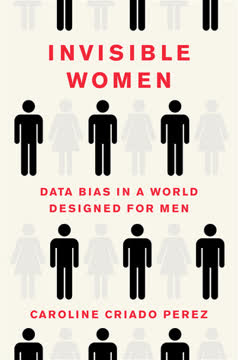Key Takeaways
1. Epidemiology: Studying Health and Disease in Populations
Put concisely, epidemiology is the study of health and disease in populations.
Population focus. Epidemiology distinguishes itself by examining health and disease at the population level, contrasting with clinical medicine's focus on individual patients. This perspective allows for the identification of patterns and trends that might be missed when looking at individual cases.
- Epidemiology is not just about epidemics; it encompasses all aspects of health-related conditions within a population.
- It combines medical research with statistical and social science methods.
Historical roots. The field's origins can be traced back to Hippocrates, who emphasized the importance of environmental and lifestyle factors in health. Key figures like John Snow, who identified the source of cholera outbreaks, and Joseph Goldberger, who linked pellagra to dietary deficiencies, further shaped the discipline.
- John Snow's work demonstrated that epidemiological analyses can lead to disease prevention even without knowing the specific causative agent.
- Rudolf Virchow promoted the idea that medicine and public health are applied social sciences.
Modern applications. Today, epidemiology plays a crucial role in understanding and controlling both infectious and non-communicable diseases. It involves describing disease patterns, identifying risk factors, evaluating interventions, and informing public health policies.
- Epidemiology serves a diagnostic function for community health, similar to a doctor's consultation for an individual.
- It encompasses both observational and experimental studies, with observational studies being the most common.
2. Measuring Disease: Prevalence, Risk, and Incidence
Health is a state of complete physical, mental and social well-being and not merely the absence of disease or infirmity.
Defining disease. Measuring health begins with defining disease, which can be done through established criteria or doctor diagnoses. Disease definitions evolve with medical knowledge, and epidemiology itself contributes to refining these definitions.
- The International Classification of Diseases (ICD) is a widely used system for classifying and coding diseases.
- Mortality statistics, based on death certificates using ICD codes, are a key measure of population health.
Prevalence proportion. Prevalence measures the proportion of a population with a disease at a specific point in time. It's a snapshot of the disease burden and is useful for planning health services.
- Prevalence = (Number of cases) / (Number of people in the population)
- Prevalence reflects the balance between new cases and the disappearance of existing cases.
Incidence rate. Incidence rate measures the rate at which new cases of a disease occur over time. It's a dynamic measure that captures the probability of developing the disease per unit of time.
- Incidence Rate = (Number of new cases) / (Total person-time at risk)
- Incidence rate is a fundamental measure in epidemiology and demography.
3. Finding Causes: Associations, Biases, and Chance
Most of the epidemiologist’s investigative work consists in trying to identify the ‘factors without which’ a disease would or would not arise.
Identifying exposures. Epidemiologists seek to identify factors, or exposures, associated with increased or decreased disease rates. These factors can be social, biological, chemical, or physical.
- The goal is to find factors "without which" a disease would or would not arise.
- Examples of exposures include stress at work, inherited genes, fatty foods, and air pollutants.
Minimizing biases. Comparing rates between groups requires careful attention to potential biases. Confounding factors, selection bias, and observation bias can all distort the results.
- Confounding factors are other variables that may explain the observed association.
- Selection bias occurs when the study population is not representative of the general population.
- Observation bias arises from differences in how data is collected or interpreted.
Ruling out chance. Statistical significance tests and confidence intervals help determine whether an observed association is likely due to chance. These tools provide a measure of the uncertainty in the results.
- Significance tests assess the probability of observing the results if there is no real association.
- Confidence intervals provide a range of plausible values for the true association.
4. Establishing Causation: Interpreting Associations
The key point is that even if smoking were to be causally related to any disease it is neither a necessary nor a sufficient cause.
Causation criteria. Establishing causation requires more than just demonstrating an association. Several criteria, such as temporality, strength of association, consistency, specificity, biological plausibility, and coherence, are used to evaluate the evidence.
- Temporality: The exposure must precede the disease.
- Strength of association: Stronger associations are more likely to be causal.
- Consistency: The association should be observed in different populations and studies.
Individual vs. population determinants. Disease determinants can operate at both the individual and population levels. Population determinants, like widespread dietary habits, influence the overall disease risk in a population.
- Individual determinants, like genetic susceptibility, explain differences in risk between individuals within a population.
- Recognizing both types of determinants is crucial for effective prevention strategies.
Tobacco and health. Research on tobacco and health has been a key driver of epidemiological methods. Studies have established tobacco smoking as a cause of various diseases, including lung cancer, cardiovascular disease, and chronic bronchitis.
- The sooner smoking is stopped, the greater the health benefit.
- Tobacco smoking has emerged as the greatest killer in peacetime.
5. Intervention Studies: Testing Disease Control
The great advantage of this type of study is that it can in principle be carried out in all contexts to investigate any health phenomenon.
Randomized controlled trials (RCTs). Experimental studies, particularly RCTs, are the gold standard for evaluating interventions. Random assignment of subjects to treatment groups minimizes bias and allows for causal inferences.
- RCTs are most commonly used to test the effectiveness of new drugs or vaccines.
- The polio vaccine trial is a classic example of a successful RCT.
Key features of RCTs. RCTs involve randomization, careful selection of the study population, a well-defined treatment, blinded observation, and rigorous data analysis.
- "Intention to treat" analysis is used to account for dropouts during the trial.
- Ethical considerations are paramount in RCTs, particularly when testing interventions with potential risks.
Observational vs. experimental studies. While RCTs are powerful, they are not always feasible or ethical. Observational studies, like cohort and case-control studies, can provide valuable insights, but require careful attention to potential biases.
- Both observational and experimental studies are complementary instruments of epidemiology.
- Sometimes, observational studies are the only ethical way to study a particular health outcome.
6. Cohort Studies: Following Health Over Time
The subjects are then followed up in time, and a number of events recorded, typically the occurrence of a disease, like diabetes or myocardial infarction, or death from a disease or change in some trait like weight or blood pressure.
Prospective observation. Cohort studies involve following a group of people over time to observe the occurrence of health-related events. These studies can provide valuable information about the long-term effects of exposures.
- The EPIC (European Prospective Investigation into Cancer) study is a prototype contemporary study.
- Cohort studies can be prospective or historical.
Key features of cohort studies. Cohort studies require careful selection of the population, standardized measurement of exposures, mechanisms for tracing participants, and rigorous data analysis.
- The choice of population is crucial for identifying exposure-disease associations.
- Events such as disease occurrence or death are the typical responses to be recorded.
Genetic factors. Modern cohort studies often incorporate genetic data, allowing researchers to investigate the interplay between genes and environmental factors in disease development.
- Blood specimens are collected and stored for future genetic and biochemical analyses.
- These studies can help identify genetic variations associated with disease risk.
7. Case-Control Studies: Investigating Past Experiences
Case-control studies were in fact widespread in epidemiology well before their use in the special situation where cases and controls are extracted from an actual study cohort.
Retrospective approach. Case-control studies start with cases of a disease and compare their past exposures to those of a control group without the disease. This approach is efficient for studying rare diseases or those with long latency periods.
- Case-control studies are a natural expansion of the enquiry a doctor makes the first time he or she sees a patient.
- They are particularly useful for generating initial hypotheses about disease causes.
Key features of case-control studies. Case-control studies require careful selection of cases and controls, accurate ascertainment of exposure, and appropriate data analysis.
- The selection of controls is a major challenge for epidemiologists.
- Ascertaining exposure often involves interviewing cases and controls about their past experiences.
Odds ratio. Case-control studies estimate the odds ratio, which approximates the relative risk when the disease is rare. The odds ratio provides a measure of the association between exposure and disease.
- The odds ratio can be calculated even when the incidence rates are unknown.
- Case-control studies are adaptable to all manners of circumstances and relatively rapid to implement.
8. Mapping Disease: Space, Time, and People
Observing a disease distribution in space, time, and categories of people provides useful indications of which factors need to be explored in depth through analytical studies as possible determinants of the distribution.
Descriptive epidemiology. Descriptive studies examine the distribution of health and disease in populations by space, time, and person. These studies can reveal patterns and trends that suggest potential causes.
- Descriptive studies are generally both preceded and followed by analytical studies.
- They provide useful indications of which factors need to be explored in depth through analytical studies.
Data sources. Descriptive epidemiology relies on data from vital statistics, disease registries, and health surveys. The quality and completeness of these data vary across countries.
- Morbidity statistics are disease-oriented, and range from hospital discharge records to registries.
- Surveillance systems of communicable diseases have evolved in promptness and coverage.
Ecological studies. Ecological studies examine the correlation between disease rates and exposures at the population level. These studies can be useful for generating hypotheses, but are prone to ecological fallacy.
- Ecological studies are fast and friendly.
- Correlation is not causation.
9. Public Health: From Research to Action
Epidemiology is at heart a field of applied research with the improvement of the health of all as the key aim.
Translating research into practice. Epidemiology is an essential component of public health, which involves organized efforts to promote, protect, and restore health. This requires translating research findings into effective interventions.
- Public health coordinates activities in relation to other societal actions, external to the health system, which strongly influence health.
- Public health administrators and policy makers usually demand that the benefits and adverse effects of proposed policies be subject to economic analysis.
Systematic reviews. Systematic reviews synthesize the evidence from multiple studies to provide a comprehensive and objective assessment of a particular question. Meta-analysis can be used to combine the results of multiple studies.
- Systematic reviews are a review carried out using a systematic approach to minimize bias and random errors.
- Meta-analyses are most valuable for clinical medicine.
Clinical medicine. Epidemiology informs clinical practice by providing tools for diagnosis, treatment, and prevention. Concepts like number needed to treat (NNT) and diagnostic decision trees help clinicians make informed decisions.
- Comparing treatment options is helped by computing the NNT, or number needed to treat.
- A diagnostic decision tree is designed to assist the physician in formulating a diagnosis.
10. Ethics and Politics: Justice in Health
Ensuring that results of research are effectively translated into benefits for all people, reducing the social injustices in health, demands an active involvement which may take variable forms, from assistance to full participation in decision making, to social critiques, and to advocacy initiatives.
Ethical considerations. Epidemiological studies raise ethical concerns about data confidentiality, informed consent, and the use of biological specimens. Ethics committees play a crucial role in protecting the rights and welfare of study participants.
- A project which is scientifically invalid, hence incapable of producing reliable information, is automatically unethical and not acceptable.
- The conduct of epidemiological studies poses ethical problems, particularly concerning the confidentiality of identifiable personal data and the use of stored blood samples to carry out genetic and other tests.
Global health inequalities. Vast inequalities exist in health outcomes between developed and developing countries. These inequalities reflect social injustices and require political action to address.
- A newborn in Africa can expect – if today’s conditions do not improve – to live on average 30 years less than a newborn in North America or Europe.
- The key role of social determinants, including economic ones, for health not only in developing but also in developed countries has prompted the establishment by the World Health Organization of a Commission on Social Determinants of Health.
Empowering people. Empowering people to take responsibility for their health requires access to accurate information and participation in decision-making processes. This can be achieved through education, information, and critical thinking skills.
- In an equal rights society, every citizen ought to be empowered to take part in decisions affecting her or his health and, through democratic processes, in deliberations concerning the health of the population.
- There are, however, some rules of thumb that may be usefully applied to screen health information from Web searches or in the media.
Last updated:
Review Summary
Epidemiology: A Very Short Introduction receives mixed reviews, with an average rating of 3.37/5. Readers appreciate its concise overview of epidemiology's principles, history, and applications. Many find it informative for understanding public health and disease prevention. However, some criticize the book's dry writing style and technical content, particularly the statistical sections. Several reviewers note its relevance to current events like the COVID-19 pandemic. While some praise its accessibility, others find it challenging for non-specialists.
Very Short Introductions Series Series












Similar Books
Download PDF
Download EPUB
.epub digital book format is ideal for reading ebooks on phones, tablets, and e-readers.







